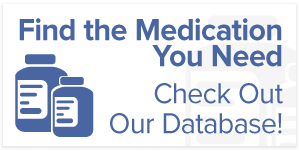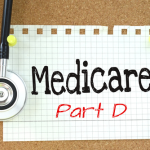Most Commonly Prescribed Medication for Seizures
Seizures result from alterations in our brain’s electrical activities, leading to dramatic symptoms or none at all. They occur when the connections between the brain’s nerve cells are disturbed. Seizures are a hindrance in your daily life, and in some cases, they can even be life-threatening.
However, prescription medicines can help patients manage seizures effectively. But there are tons of seizure medications out there, and what are the most commonly prescribed ones?
This blog will brief you on some of the most commonly prescribed medications for seizures and how prescription assistance programs can help you afford them.
What Are Seizures?
Before we delve into the commonly prescribed medicines for seizures, we need to understand seizures and their causes.
A seizure occurs when there’s a temporary abnormal change in our brain’s electrical activities. They occur due to reasons like injury or sickness. Epilepsy can also result in seizures as it makes your brain send abnormal signals.
You can experience violent shaking and a loss of control during a severe seizure. Some seizures are known as convulsions. However, not every seizure results in convulsive behavior. There are also absence seizures that involve long periods of staring.
Additionally, seizures can be life-threatening, like the status epilepticus in which the seizure doesn’t stop.
Types Of Seizures
Prescribed medicines for seizures can depend on the type of seizures. There are three major types of seizures:
- Focal onset
- Generalized onset
- Unknown onset
Narrow Spectrum Anti-Epileptic Drugs (AEDs)
These are prescribed as a treatment for focal seizures. These include:
- Carbamazepine (Carbatrol, Equetro, Tegretol, etc.)
- Gabapentin (Neurontin)
- Vigabatrin (Sabril)
- Eslicarbazepine (Aptiom)
- Lacosamide (Vimpat)
Broad Spectrum AEDs
Broad-spectrum AEDs show some effectiveness for a variety of seizures, including an absence of myoclonic seizures.
- Acetazolamide
- Lorazepam (Ativan)
- Clorazepate (Gen-Xene, Tranxene-T)
- Levetiracetam (Elepsia XR, Keppra, etc.)
- Methsuximide (Celontin)
- Brivaracetam (Briviact)
- Zonisamide (Zonegran)
- Perampanel (Fycompa)
- Diazepam (Valium, Valtoco, Diastat)
- Primidone (Mysoline)
- Clonazepam (Klonopin)
- Cannabidiol (Epidiolex)
- Rufinamide (Banzel)
- Divalproex (Depakote etc)
- Stiripentol (Diacomit)
- Valproic acid
- Cenobamate (Xcopri)
- Felbamate (Felbatol)
- Clobazam (Onfi, Sympazan)
- Fenfluramine (Fintepla)
- Lamotrigine (Lamictal, Lamictal ODT, etc.)
- Topiramate
What Are the Most Common Seizure Medicines?
When it comes to generalized tonic-clonic seizures (seizures that involve the full body), the first line of therapy includes:
- Valproic acid
- Lamotrigine
- Topiramate
In comparison, these medicines are more commonly prescribed for partial seizures:
- Carbamazepine (Tegretol)
- Ethosuximide (Zarontin) for children
- Oxcarbazepine (Trileptal)
- Phenytoin (Dilantin)

If you’re seeking full-service prescription assistance for your seizure prescription meds, Advocate My Meds is what you’re looking for!
We are a full-service prescription assistance organization that offers prescription help for all of your medical needs. Just visit our website and check if you’re eligible for our prescription assistance organization.
Get in touch with us to enroll in our full-service prescription assistance programs today.







